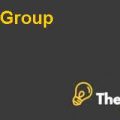Globalizing the Cost of Capital and Capital Budgeting at AES Case Solution
Capital budgeting method used historically by AES
The case illustrates the importance of a particular project implemented by AES regarding the expansion of its business into major parts of the world. Under this case, the independent electricity supplier company wanted to know the cost of capital of each selected project in different countries. For that, it used the traditional formula to calculate the cost of capital and it shows that the net value determined by the estimated US project would then be implemented in all the projects of different countries.
It also estimated that the single predetermined WACC would be considered as the key to success for all the businesses. However, the situation was unfortunately not favorable to AES because during the early 20th century, a global economic crisis had led to increase the inflation as well as reduced the economic conditions of the developing countries where the projects were implemented. Thus, the situation was not considering the same level of WACC and therefore required an critical evaluation to include additional changes in the WACC for each country. In conclusion, if the certain decisions would not be implemented, then the company would be subjected to crisis and bankruptcy.
Problems faced by managers regarding the use of different types of projects across countries
With the threats faced by AES regarding the dangers of using the same level of WACC for all the countries, it is determined that the company would follow some changes that could reduce the risk of currency exchanges and the economic fluctuations within each developing country where the project would be executed.
Therefore, in order to reduce the risks, AES estimated different undiversified risks that could hurt the entire chain of operations located domestically. For that, a modified WACC had been implemented by analyzing the market risk and the default ratio within each country and adjusted the WACC with these values in order to know the optimal results.
However, the managers faced some difficulties under the calculations because it was hard to predict the expected economic conditions of each country due to the provision of diversified risk in the years of implementation. This shows that a predetermined WACC would only be calculated through a relationship between the US economy and the target economy by evaluating the expected equity shares and to analyze the level of debt, which would contribute to economic success.
Venerus new methodology to implement the WACC
If Venerus would use the new methods to implement the cost of capital for all the given projects, then it would use the rate from 5% to 9% for all the countries according to the results calculated under each category. It also shows that if a company would include the single cost of capital rate for all the countries, then it should consider an average value of all the given values that were calculated.
Approaches to capital budgeting used by a global firm
In order to determine the capital budgeting process for each of the given project; the company first suggested that an unlevered beta of all the market comparable should be included before calculating the cost of equity for the parent company. Therefore, to identify the beta of each of the selected country, an average of a market unlevered beta would be compared with the risk free rate of return of the US treasuries and then analyze the debt to capital ratio of the host operations in order calculate the levered beta of the company. ....................
This is just a sample partial case solution. Please place the order on the website to order your own originally done case solution.









